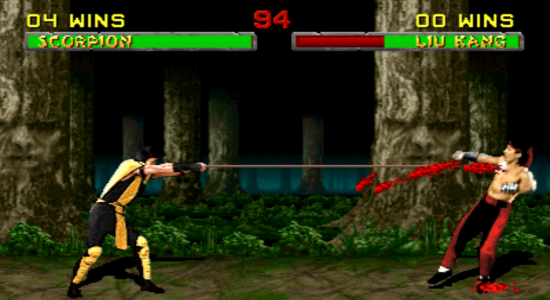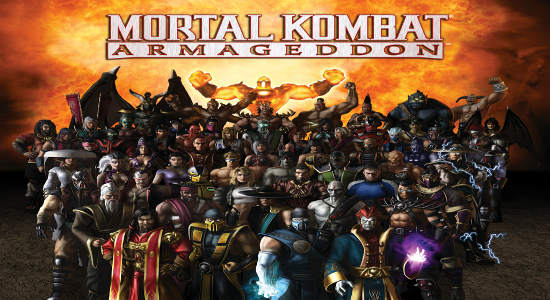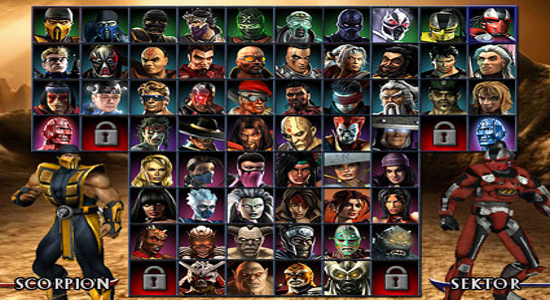Once touted as one of the most violent games ever created, Mortal Kombat, as a fighting series, has seen more demonization than most games ever see throughout their entire recognizable time in popular culture. Nevertheless, despite being kept out of competitions like EVO, being held this weekend and traditionally revolves around more traditionally balanced fighting titles such as Street Fighter, Mortal Kombat has had a distinct cult following since its creation. While the original seemingly broke all the conventions that had been established regarding moral game design and their approach to the community, it was the sequel that stands out as one of the best ever in the franchise, if not the genre.
Mortal Kombat II arrived following the pleasantly strong reception enjoyed by the first. Regardless of the criticism of gaming violence and the prospect that seeing a video game character rip the heart out of another might inspire kids to do the exact same thing, it hasn’t really happened. Essentially taking everything from Mortal Kombat and ramping it up to eleven, it was virtually impossible for gamers, no matter what walk of life or gaming preference, to ignore the force of prescience that Mortal Kombat II carried with it in the Arcades, Super Nintendo, but most importantly on the Sega Genesis.
Yes, even though Nintendo allowed the blood and gore that they Nintendidn’t with the original, the stigma still hung pretty low over their heads – Mortal Kombat II was still a Sega Genesis title. And why not? Visually, it looked better since the fighter’s had been motion captured, where they appeared as if they had been painted on the screen and the superior quality of the sound in the Genesis version only served to add insult to injury. Mortal Kombat had marked it’s territory and given Sega fanboys a feather in their hat that can still be flaunted to this day. After all, history is on their side.
Adding a slim picking of five new characters didn’t serve to disparage players from purchasing the game. If you played it, even briefly in the arcade, buying it to play from those precious few hours after dinner to all day on the weekend was time well wasted and seemed a logically plausible move. The moves had been expanded and refined as well as the levels cleaned up. The addition of babalities, multiple fatalities, friendships and more level-specific finish moves made the game a must-have fighting title for Sega owners when Nintendo players couldn’t get enough of Street Fighter at the time. Without a doubt, everything great about Mortal Kombat is best immortalized spiritually in Mortal Kombat II.
On the other hand, Mortal Kombat: Armageddon takes everything great about the franchise and instead of turning it up to eleven, sits back and throws bananas repeatedly at the sound knob. Instead of a tight, solid selection of fighters – gamers are offered a chance to play as one of the sixty-three different fighters to ever appear playable in the franchise. Even though to many, this would seem like a pretty solid deal, quantity doesn’t necessarily serve to outweigh quality.
Nevertheless, the game hit the shelves and for the most part, was pretty laughable – and not in the good way. Granted, Midway was on the ropes by then, locked in a life and death struggle to stay alive, which they eventually lost, but they seemed to be stricken with an uncanny desire to run the MK series into the ground as hard as they could before exiting stage left. All of the flaws in previous games came into a dreadfully bright light as a potentially worthwhile last hurrah turned into a grief-riddled stroll down memory lane.
The create-a-fatality that went hand-in-hand should’ve been something that would set the game apart from its contemporaries. However, this was executed so poorly that the ability for players to make their own fighter seemed mostly forgettable. Additionally, being built on the 3D engine of its predecessors seemed to carry over many of the flaws that should have been fixed somewhere down one of the many design cycles of the varied games during the lifespan of the Mortal Kombat collection. But, this wasn’t the case. Contrary to any convention, all of the many past problems seemed to become compacted into this title – creating a singularity of painfully poor gameplay and lackluster design.
Midway was dauntlessly certain to turn the lights off on their way out and to make sure the door didn’t hit them on the ass either. Mortal Kombat: Armageddon has since become the butt of several jokes in the fighting-game community, particularly when placed side-by-side by more lauded titles such as Street Fighter IV. But there is hope as was illustrated at E3 this year.
Mortal Kombat is coming back. While the game is still in some early alpha-level built, the developers have already stated that they’ll be using Mortal Kombat II as their template for this latest incarnation. Funny how they said Mortal Kombat II and not Mortal Kombat: Armageddon. Where it would be trendy for a creator to simply tweak assets that are already available to have a game on store shelves by Christmas – this clearly seems to be a responsible move by designers who have a beloved appreciation for the source material.
This goes to show you that sometimes, the best answers for game design lie in the past as opposed to breaking what already works. In a medium that is still as young as video games, it seems dreadfully unnecessary for game developers to constantly be reinventing the wheel when the propagation of nostalgia is still in wanton demand. Certainly, risky new design choices are great when it comes to new intellectual properties and high concepts that players and the community as a whole have never had a chance to lay their eyes on. But, when it comes to video games that many of the people currently creating games grew up playing – sometimes it’s just best to bet on the classics.





I love in the SNES version how they change the blood to ‘sweat’ and it just looks like dirt flying out of their faces
@Matthew, remember, you still needed a code to get the blood in the Genesis version!
God, Armageddon looks less like an official fighting game and more like some terrible MUGEN fighter.
I was in middle school around the time MK2 came out and I think we’ll never again have a time (what with the pervasiveness of the Internet and all) when seemingly everyone had some bizarre notion of how to get some weird ‘secret’ character. It didn’t help that there actually *were* some pretty weird secret characters, either.
I really wish I could keep all the advances we’ve made in games since and go back to a time when you’d still have that fun speculation.
Also, I like how Dr. Manhattan and Dr. Manhattan’s palette swap (Dr. Bronx?) are apparently characters in this game.
Someone needs to make what’s essentially a Mortal Kombat trolling game, where it’s all just one character with 65,536 color options.